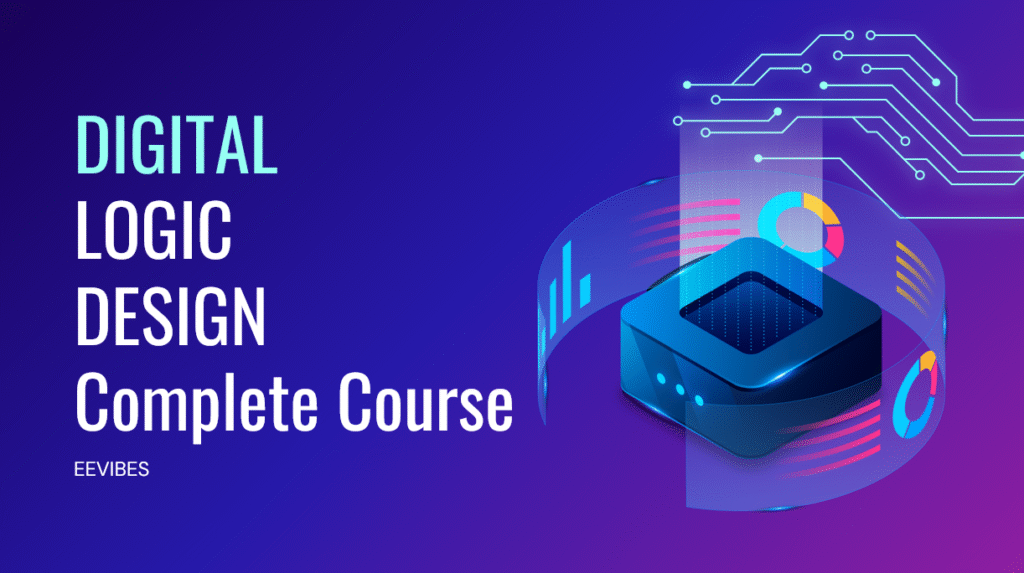
Introduction
Digital logic design is an undergraduate course which is the foundation of modern electronics, focusing on the creation of circuits that process binary signals—zeros and ones—to perform computational tasks. It involves designing systems using fundamental components like logic gates (AND, OR, NOT, XOR, etc.), flip-flops, and multiplexers, which are combined to build complex structures such as processors, memory units, and control systems. The process starts with understanding Boolean algebra, which governs how binary inputs produce outputs through logical operations. Designers use tools like truth tables, Karnaugh maps, and state diagrams to simplify and optimize circuits, ensuring efficiency and reliability. Technologies like CMOS (Complementary Metal-Oxide-Semiconductor) are commonly employed to implement these designs in hardware, balancing speed, power consumption, and cost. Digital logic design is critical in fields like computer engineering, embedded systems, and VLSI (Very Large Scale Integration), enabling everything from smartphones to spacecraft. Advanced concepts, such as sequential logic and finite state machines, allow for dynamic systems that respond to inputs over time, making it a cornerstone of innovation in computing and automation.
Complete Course Outline
Here is the complete course outline that will be followed for the accomplishment of PLOs.
| Lecture Schedule | Monday (9:30 am – 11:00 am)
Friday (11:00 am – 12:30 pm) |
Semester | 3rd | |||||||||||||||||||||||||||||||||||||||||||||||||||||||||||||||||||||||||||||||||||||||||||||||||||||
| Course Code | EF-2202 | Credit Hours | 3 | |||||||||||||||||||||||||||||||||||||||||||||||||||||||||||||||||||||||||||||||||||||||||||||||||||||
| Instructor | Engr. Asma Mushtaq | Pre-requisite | None | |||||||||||||||||||||||||||||||||||||||||||||||||||||||||||||||||||||||||||||||||||||||||||||||||||||
| Contact | asmamushtaq@gcu.edu.pk | Office | First Floor
EE Department |
|||||||||||||||||||||||||||||||||||||||||||||||||||||||||||||||||||||||||||||||||||||||||||||||||||||
| Course Description |
The undergraduate course provides the students with a fundamental knowledge about digital logic design. The course starts with the number system. The students are taught how to perform arithmetic in different number systems and perform conversion between different bases. Boolean algebra is introduced. Students are explained how to analyze and design combinational and sequential logic circuits. Counters and shift registers are explained. Hardware descriptor language is introduced. Extensive numerical problems are required in the course to fully comprehend the concepts. At the same time, emphasis is required on the basic concepts so that the students are able to apply their knowledge in different unseen scenarios. The lectures are supplemented by a laboratory.
|
|||||||||||||||||||||||||||||||||||||||||||||||||||||||||||||||||||||||||||||||||||||||||||||||||||||||
| Course Learning Outcomes (CLOs) |
Upon completion of this course, students will be able to:
* Bloom’s taxonomy level. C: Cognitive, P: Psychomotor, A: Affective
|
|||||||||||||||||||||||||||||||||||||||||||||||||||||||||||||||||||||||||||||||||||||||||||||||||||||||
| Weekly Plan |
Note: This lecture plan is based on 3 hours class time per week with a 16 week semester excluding the time for the final examinations |
|||||||||||||||||||||||||||||||||||||||||||||||||||||||||||||||||||||||||||||||||||||||||||||||||||||||
| Learning Resources | Text Book:
· M. Morris R. Mano and Michael D. Ciletti , “Digital Design: With an Introduction to the Verilog HDL”, Pearson, 5th Edition, 2012, ISBN-13: 978-0132774208 Reference Book: · M. Morris R. Mano, Charles R. Kime, Tom Martin , “Logic & Computer Design Fundamentals”, Pearson, 5th Edition, 2015, ISBN-13: 978-0133760637 · Ronald Tocci, Neal Widmer, Greg Moss, “Digital Systems”, Pearson, 12th Edition, ISBN-13: 978-0134220130 · Wayne Wolf, “FPGA-Based System Design”, Pearson, 2009, ISBN-13: 978-8131724651 |
|||||||||||||||||||||||||||||||||||||||||||||||||||||||||||||||||||||||||||||||||||||||||||||||||||||||
| Assessment | The assessment is done according to the guidelines provided by the University as follows:
Relationship between assessment tools and CLOs:
Relationship between Program Learning Outcomes (PLOs) and CLOs.
|
|||||||||||||||||||||||||||||||||||||||||||||||||||||||||||||||||||||||||||||||||||||||||||||||||||||||
DLD Course Outline OBE Based
Digital Logic Design Book by Morris Mano Pdf
Digital Logic Design Assignment 1
Complete Playlist of DLD
Digital Logic Design Assignment 2
Due Date is: 22-09-2025!
Complex Engineering Problem DLD
LAB 8 DLD!!!!!
Lab_12_Updated
Lab 13 (Updated)
Solution: https://eevibes.com/digital-logic-design/verilog-code-for-designing-a-full-adder-by-using-two-half-adders/